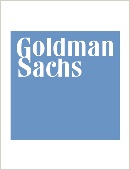In general VLCC chartering activity was slower during the week.
Older tonnage built up in the MEG weighing down on rates, which fell to mid-WS50’s MEG/East, Fearnleys reported.
The tonnage list was somewhat thinner for the more modern VLCCs, as
owners clearly expected rates to firm throughout the winter.
However, West Africa/East rates did not fall nearly as much as seen in
the MEG and the rate difference between the trades widened by about WS10
points. Owners expected volumes to increase and rates for now may have
bottomed out, Fearnleys said.
Suezmaxes in West Africa fell to WS67.5 levels as the tonnage hangover from October began to bite.
As the week progressed, there has been further softening and rates plateaued at WS65 for TD20.
Meanwhile, eyes have been focussed on the Novorossiysk and CPC
programmes where activity picked up but the availability of ships has
also increased due to West Med tonnage ignoring West Africa and focusing
on the better TCE returns ex Black Sea.
The coming week will be challenging for owners in West Africa, as the
latter part of the 2nd decade is overtonnaged due to sparse activity.
The Black Sea is expected to stabilize as the heavy programme continues.
Last week was fairly busy in the North Sea and Baltic, and an increase
in rates was expected by the majority of owners. The result was year to
date’s smallest and most short-lived spike going up a staggering WS2.5
points for nearly a day.
However, softening rates for the week to come should be expected, due to upcoming maintenance at Primorsk.
In the Black Sea and Med, it has been an interesting week for everyone
involved. Rates were under pressure at the end of last week, and high
WS80s was paid from Black Sea early November loading dates.
After the weekend, we saw more prompt tonnage in place, and three
cross-Med market quotes made owners give up putting the market back at
low WS70s. The Black Sea programme should get extremely busy from next
week, so the market has some upward potential for the rest of the month,
Fearnleys concluded.
Sale and leasebacks are becoming an increasingly popular way of financing.
One of the latest deals to come to light was Singapore-based product
tanker owner and operator BW Pacific’s sale of two LR1s on a lease back
basis.
The vessels were thought to be the 2006-built ‘Compass’ and
‘Compassion’ which were said to have been sold to China’s Bank of
Communications.
The price was not disclosed but each tanker was chartered back to BW Pacific for seven years.
Navig8 Product Tankers has taken delivery of the LR2 ‘Navig8 Guide’
from Guangzhou Shipyard International Co (GSI), formerly CSSC Offshore
& Marine Engineering (Group) Co.
‘Navig8 Guide’ is the fourth of eight vessels contracted at GSI to be
delivered to the company and is the fourth vessel to be delivered under
the sale and leaseback agreements entered into with CSSC (Hong Kong)
Shipping Co (CSSC).
Following her delivery from GSI, the LR2 was delivered to CSSC under
the terms of the sale MOA and then taken back by the Company under a
bareboat charter.
She has joined Navig8 Group's Alpha8 commercial pool.
Meanwhile, Navig8 Chemical Tankers has taken delivery of the ‘Navig8
Stellar’, a 25,000 dwt stainless steel chemical tanker from Kitanihon
Shipbuilding.
She is the fourth of six vessels contracted at the yard to be delivered
to the company and is the second and final vessel to be delivered under
the sale and leaseback arrangements entered into with subsidiaries of
SBI Holdings.
‘Navig8 Stellar’ will be operated in Navig8 Group's Stainless8 commercial pool.
Gener8 Maritime took delivery of the VLCC ‘Gener8 Miltiades’ on 25th
October, 2016 from Shanghai Waigaoqiao Shipbuilding (SWS). She is the
16th of 21 VLCCs due for delivery into Gener8 Maritime's fleet.
Upon delivery, ‘Gener8 Miltiades’ entered Navig8 Group's VL8 Pool.
She is the sixth VLCC to be delivered by SWS, concluding the company’s new building programme at the yard.
Tsakos Energy Navigation (TEN) has taken delivery of the Aframax ‘Leontios H’ from Daewoo Mangalia Heavy Industries.
‘Leontios H’ entered into a long term contract to a northern European
charterer that could generate gross revenues in excess of $100 mill, TEN
said. She is the third vessel in a series of nine purpose built Aframax
tankers on long term time charters at accretive rates.
The company also reported the delivery from Hyundai Heavy Industries of
its second LNGC, the 174,000 cu m TFDE ‘Maria Energy’ and immediate
charter to a major end-user for a minimum 18 months and a maximum of
three years, which could generate gross revenues in excess of $70 mill
if options were exercised.
George Saroglou, TEN COO, said. "Following the delivery of the
‘Leontios H’, TEN is in the midpoint of its 15 vessel growth program.
With eight more tankers scheduled for delivery over the next five
quarters, a minimum of $720 mill will be added to TEN's secured revenues
from new vessels. This increases the company's minimum secured income
to $1.5 bill and further solidifies TEN's bottom-line and provides
healthy cash visibility going forward.”
d’Amico International Shipping (DIS) has launched three tankers at the
Vietnamese shipyard Hyundai Vinashin Shipyard - one Handysize (recently
delivered) and two MRs.
The total investment in the three ships amounted to $104 mill.
With the delivery of the ‘Cielo di Salerno’ on 21st October, DIS’ fleet
includes 51.8 ships. The delivery of the MR ‘High Wind’ is expected in
the first half of November, 2016, while her sistership ‘High Challenge’
will be in operation by the start of 2017.
One of the tankers has already been chartered to an international oil
major for three years, while the others will be placed on the spot
market, DIS said.
“We have added three new assets of great value to our fleet, which is
among the most innovative and updated on the international panorama,”
said Paolo d’Amico, DIS chairman. “We are successfully working in
partnership with a shipyard of the highest calibre, Hyundai Vinashin
Shipyard, which guarantees us ecological, safe and exceptionally
performing ships to offer our clients.”
In the charter market, broking sources reported the fixture of the
1999-built VLCC ‘Ridgebury Pioneer’ to Litasco for six months at $29,500
per day.
The 2000-built Suezmax ‘Sri Vishnu’ was said to have been fixed to BPCL for two years at $18,700 per day.
Jellicoe was believed to have taken the 2006-built Aframax ‘Jag Lyall’
for 12 months at $15,500 per day, while the 2003-built Aframax ‘Astro
Sculptor’ was said to have been fixed to Teekay for 12 months at $17,000
per day.
Stena Bulk was thought to have fixed the 2015-built MR ‘Essie C’ for 12
months at $12,750 per day, while Koch was said to have taken the
2012-built MR ‘Nave Aquila’ for six months at $11,500 per day.
Frontline’s two VLCCs - the 1999-built ‘Front Circassia’ and the
2001-built ‘Front Ariake’ were believed sold to Russian interests for
$50 mill en bloc.
Reported to be leaving the fleet was the 1994-built VLCC ‘Progress’
believed sold to Bangladesh breakers on private terms. She had been
recently used as a storage vessel.
There were a few more orders reported this week.
For example, Nordic American Tankers (NAT) has confirmed that it had
entered into agreements with Samsung Heavy Industries for the
construction of three Suezmaxes to be delivered during the second half
of 2018.
"This is another large step forward for Nordic American," said chairman
and CEO Herbjørn Hansson. "By adding these ships, we substantially
increase the dividend capacity and bolster our earnings potential. We
believe that our solid balance sheet as well as our well-defined and
transparent operating model are elements supporting the competitive
position of NAT. The stock issue of about $120 mill that we completed 30th
September, will part finance this transaction. A 33 vessel homogenous
Suezmax fleet is making NAT stronger and the company becomes even more
attractive for our customers."
Gulf Navigation (GulfNav) has formed a strategic long-term partnership
with Wuchang Group, which has led to the ordering of six chemical
tankers.
Khamis Juma Buamim, Gulf Nav board member, managing director and Group
CEO, said "This partnership with Wuchang Heavy Industry Group, which is
one of the largest companies worldwide in its field, is a significant
step that will enable us to strengthen the company’s capabilities by
expanding our fleet with modern and advanced tankers. This will enhance
our competitiveness in the transfer of chemicals; a market that is
steadily expanding and is witnessing increasing demand.
“We started with Wuchang Group by signing an agreement to immediately
begin building six chemicals tankers. At the same time, we discussed
with them co-operation opportunities in various areas. One of the most
important pillars of this agreement is to pave the way for Chinese
investors and attract them to work in the local market, which will
reflect positively on the region as a whole,” Buamim said.
A few smaller units were also ordered by Baltic Sea-based owners.
These included two dual fuel Ice Class 1A 25,600 dwt chemical tankers
for ESL Shipping, contracted at Jinling for 2017-2018 deliveries.
Furetank and Älvtank have also extended their orders with two more
intermediate product/chemical tankers with LNG propulsion. They will be
operated in the Gothia Tanker Alliance.
The latest two will also be built at Avic Dingheng Shipbuilding to the
same design as the other vessels. They will be delivered during
2018/2019.
Including the previous order, Gothia Tanker Alliance now has six
tankers on order - three for Furetank, two for Älvtank and one for Thun
Tankers. They will be commercially managed by Furetank Chartering.






